Can You Go Blind From An Eye Tattoo? Eye tattoos, also known as sclera tattoos, carry significant risks, including vision loss, and tattooat.com wants you to be fully informed about the dangers involved in this extreme form of body modification. Understanding the potential complications, such as infection, inflammation, and even blindness, is crucial before considering this procedure; explore safer alternatives and discover stunning body art designs, find talented tattoo artists, and learn essential aftercare tips for all your tattoo needs with tattooat.com.
1. What Is An Eye Tattoo And How Is It Performed?
An eye tattoo, also known as a scleral tattoo, involves injecting ink directly into the sclera, the white part of the eye, and is a cosmetic procedure to change the color of the sclera. During the procedure, a tattoo artist uses a needle to inject pigment into the sclera, and the ink spreads out to color the white part of the eye; this process is different from traditional tattoos, which apply ink to the skin.
1.1 What are the steps involved in performing an eye tattoo?
The steps involved in performing an eye tattoo are:
- Consultation: The individual consults with the tattoo artist to discuss the desired color and the process involved.
- Preparation: The area around the eye is cleaned, although the eye itself cannot be sterilized.
- Injection: The tattoo artist uses a needle to inject the ink into the sclera. The needle is inserted between the sclera and the conjunctiva, the thin membrane covering the sclera.
- Distribution: The ink spreads out across the sclera, coloring the white part of the eye.
- Post-Procedure Care: The individual is given instructions on how to care for the eye to prevent infection and other complications.
1.2 Who typically performs eye tattoos?
Eye tattoos are typically performed by body modification artists, and it is important to note that not all tattoo artists are qualified to perform eye tattoos, and this procedure requires a high level of skill and knowledge of eye anatomy to minimize the risk of complications.
1.3 What type of ink is used for eye tattoos?
The type of ink used for eye tattoos is pigment, however, the exact composition can vary, and it is crucial to use sterile, high-quality ink specifically designed for cosmetic procedures. The use of non-sterile or industrial-grade inks can lead to serious infections and other complications.
2. What Are The Immediate Risks Associated With Eye Tattoos?
The immediate risks associated with eye tattoos include infection, inflammation, and potential vision impairment. The eye is a delicate organ, and any invasive procedure carries the risk of introducing bacteria or other pathogens.
2.1 What are the signs of an eye infection after getting an eye tattoo?
The signs of an eye infection after getting an eye tattoo are:
- Redness
- Pain
- Swelling
- Discharge
- Sensitivity to light
- Blurred vision.
2.2 How can inflammation affect the eye after an eye tattoo?
Inflammation can affect the eye after an eye tattoo by causing swelling, discomfort, and potentially leading to more severe complications such as glaucoma or vision loss. The inflammatory response can damage the delicate structures of the eye, leading to long-term issues.
2.3 What types of vision impairment can occur immediately after the procedure?
The types of vision impairment that can occur immediately after the procedure are:
- Blurred vision
- Double vision
- Light sensitivity
- Temporary blindness.
3. What Are The Long-Term Risks Of Eye Tattoos?
The long-term risks of eye tattoos include blindness, cataracts, and chronic pain, and while some immediate complications can be treated, the long-term effects can be irreversible and devastating.
3.1 Can eye tattoos cause complete blindness over time?
Yes, eye tattoos can cause complete blindness over time, as the ink can migrate within the eye, damaging critical structures such as the retina or optic nerve; also, chronic inflammation and infection can also lead to irreversible vision loss.
3.2 How do cataracts develop as a result of eye tattoos?
Cataracts develop as a result of eye tattoos due to the inflammation and trauma caused by the procedure. The inflammation can damage the lens of the eye, leading to clouding and the formation of cataracts.
3.3 What kind of chronic pain can result from eye tattoos?
The kind of chronic pain that can result from eye tattoos includes:
- Persistent headaches
- Eye strain
- A constant burning or stinging sensation in the eyes.
4. Are There Any Regulations Or Laws Regarding Eye Tattoos?
Regulations and laws regarding eye tattoos vary by location, and some regions have banned the procedure due to its high risk, while others may have specific guidelines regarding who can perform the procedure and the type of ink that can be used.
4.1 Where are eye tattoos illegal?
Eye tattoos are illegal in several countries and regions due to the significant health risks, and specific locations include:
- Oklahoma
- Georgia
- Indiana
- Texas
- Florida
- Washington
- Pennsylvania
- Illinois
- Arkansas
- South Carolina
4.2 What are the legal consequences for performing illegal eye tattoos?
The legal consequences for performing illegal eye tattoos include:
- Fines
- Imprisonment
- Civil lawsuits from individuals who have been harmed by the procedure.
4.3 What should you look for in a state’s regulations regarding eye tattoos?
When looking at a state’s regulations regarding eye tattoos, you should look for:
- Licensing requirements for practitioners
- Standards for ink and equipment
- Informed consent procedures
- Age restrictions
- Health and safety guidelines.
5. What Should You Consider Before Getting An Eye Tattoo?
Before getting an eye tattoo, you should consider the risks, regulations, and alternatives, and it is crucial to be fully informed and understand the potential consequences of this procedure.
5.1 Are you fully aware of the health risks associated with eye tattoos?
Before getting an eye tattoo, you should be fully aware of the health risks such as infection, blindness, cataracts, and chronic pain, and it is essential to research and understand the potential complications.
5.2 Are you sure that the professional performing the tattoo is licensed and qualified?
Before getting an eye tattoo, you should ensure that the professional performing the tattoo is licensed and qualified, and verify their credentials and experience to minimize the risk of complications.
5.3 Have you considered alternative methods of body modification?
Before getting an eye tattoo, you should consider alternative methods of body modification such as colored contact lenses or temporary tattoos, and explore safer options that can achieve a similar aesthetic effect without the same level of risk.
6. Are There Alternatives To Eye Tattoos That Still Achieve A Similar Aesthetic?
Yes, there are alternatives to eye tattoos that still achieve a similar aesthetic, and colored contact lenses, eye makeup, and other cosmetic enhancements can provide a temporary change in eye color without the permanent risks.
6.1 Can colored contact lenses provide a similar effect to eye tattoos?
Yes, colored contact lenses can provide a similar effect to eye tattoos, and they are a safe and reversible way to change your eye color, allowing you to experiment with different looks without the long-term risks.
6.2 How can eye makeup be used to enhance or change the appearance of the eyes?
Eye makeup can be used to enhance or change the appearance of the eyes through various techniques such as using colored eyeshadows, eyeliners, and mascaras to create different effects. Makeup allows for creativity and experimentation without the permanent risks associated with tattoos.
6.3 What other cosmetic enhancements can be used to change the eye’s appearance?
Other cosmetic enhancements that can be used to change the eye’s appearance include:
- Eyelash extensions
- Eyebrow shaping
- Cosmetic tattooing of the eyebrows or eyeliner.
7. How Can You Find A Reputable Tattoo Artist For Other Types Of Tattoos?
Finding a reputable tattoo artist for other types of tattoos involves researching their credentials, reviewing their portfolio, and ensuring they follow strict safety and hygiene practices. A reputable artist will prioritize your health and safety while delivering high-quality work.
7.1 What certifications and licenses should a tattoo artist have?
A tattoo artist should have certifications and licenses such as:
- A license from the local health department
- Certifications in Bloodborne Pathogens and CPR
- Relevant training and apprenticeship.
7.2 How important is it to review a tattoo artist’s portfolio?
It is very important to review a tattoo artist’s portfolio because it allows you to assess their skill level, style, and quality of work. A strong portfolio demonstrates their experience and capabilities, helping you make an informed decision.
7.3 What safety and hygiene practices should a tattoo artist follow?
Safety and hygiene practices that a tattoo artist should follow include:
- Using sterile, single-use needles and equipment
- Wearing gloves
- Disinfecting the work area
- Properly sterilizing reusable equipment in an autoclave
- Following guidelines for waste disposal.
8. What Are The Best Practices For Tattoo Aftercare?
Best practices for tattoo aftercare include keeping the tattoo clean and moisturized, avoiding direct sunlight, and following the specific instructions provided by your tattoo artist. Proper aftercare is essential to prevent infection and ensure the tattoo heals correctly.
8.1 How should you clean a new tattoo?
You should clean a new tattoo by:
- Gently washing it with mild, fragrance-free soap and warm water
- Patting it dry with a clean towel
- Avoiding harsh scrubbing or rubbing.
8.2 What type of moisturizer is best for a new tattoo?
The best type of moisturizer for a new tattoo is a fragrance-free, hypoallergenic lotion or ointment specifically designed for tattoo aftercare. These products help keep the skin hydrated and promote healing without causing irritation.
8.3 What should you avoid during the tattoo healing process?
During the tattoo healing process, you should avoid:
- Direct sunlight
- Soaking the tattoo in water (e.g., swimming, baths)
- Picking or scratching the tattoo
- Wearing tight clothing that can rub against the tattoo
- Using harsh soaps or lotions.
9. How Does Tattooat.Com Promote Safe Tattoo Practices?
Tattooat.com promotes safe tattoo practices by providing resources and information on:
- Finding reputable artists
- Understanding the risks of different procedures
- Following proper aftercare guidelines
- Offering a platform for artists to showcase their work and connect with clients while emphasizing safety and hygiene.
9.1 What kind of information does Tattooat.com provide about tattoo safety?
Tattooat.com provides information about tattoo safety such as:
- Articles on the risks of different tattoo procedures
- Guides on how to find a reputable artist
- Best practices for tattoo aftercare
- Information on regulations and laws related to tattooing.
9.2 How does Tattooat.com help users find reputable tattoo artists?
Tattooat.com helps users find reputable tattoo artists by:
- Featuring artist profiles with portfolios and credentials
- Providing a platform for users to review and rate artists
- Highlighting artists who follow strict safety and hygiene practices.
9.3 What resources does Tattooat.com offer for tattoo aftercare?
Tattooat.com offers resources for tattoo aftercare such as:
- Detailed guides on how to clean and moisturize a new tattoo
- Tips for avoiding infection
- Advice on what to avoid during the healing process
- Product recommendations for aftercare.
10. What Are Some Inspiring Examples Of Body Art That Don’t Involve Eye Tattoos?
Inspiring examples of body art that don’t involve eye tattoos include intricate sleeve tattoos, detailed back pieces, and creative uses of color and imagery on other parts of the body, and these forms of body art offer a wide range of artistic expression without the severe risks associated with eye tattoos.
10.1 Can you describe some examples of intricate sleeve tattoos?
Examples of intricate sleeve tattoos include:
- Japanese-style sleeves with dragons, koi fish, and cherry blossoms
- Black and gray realism sleeves featuring portraits and landscapes
- Neo-traditional sleeves with bold lines and vibrant colors
- Geometric sleeves with complex patterns and designs.
10.2 What are some notable back piece tattoo designs?
Some notable back piece tattoo designs are:
- Full back tattoos featuring mythological creatures like phoenixes or dragons
- Realistic landscapes or portraits
- Intricate geometric patterns
- Traditional Japanese designs with scenes from folklore.
10.3 How can creative use of color and imagery enhance body art?
Creative use of color and imagery can enhance body art by:
- Adding depth and dimension to the design
- Creating visual interest and drawing the eye
- Conveying specific emotions or themes
- Making the tattoo more unique and personalized.
Anaya Peterson’s story serves as a cautionary tale, highlighting the severe risks associated with eye tattoos. Her experience of vision impairment and potential blindness underscores the importance of understanding the dangers involved in this extreme form of body modification. It is crucial to prioritize your health and safety by carefully considering the risks, regulations, and alternatives before undergoing any tattoo procedure.
Remember, exploring safer options, such as colored contact lenses or temporary tattoos, can provide a similar aesthetic effect without the long-term risks. For those interested in other forms of body art, finding a reputable tattoo artist who follows strict safety and hygiene practices is essential. Tattooat.com offers resources and information to help you make informed decisions about your body art journey.
Why not explore the extensive galleries of stunning tattoo designs on tattooat.com? Discover talented artists and studios near you and dive into our comprehensive guides on tattoo aftercare. Let tattooat.com be your trusted companion as you navigate the world of tattoos, ensuring your experience is safe, inspiring, and uniquely your own. Visit tattooat.com today.
 Anaya Peterson eye tattoo
Anaya Peterson eye tattoo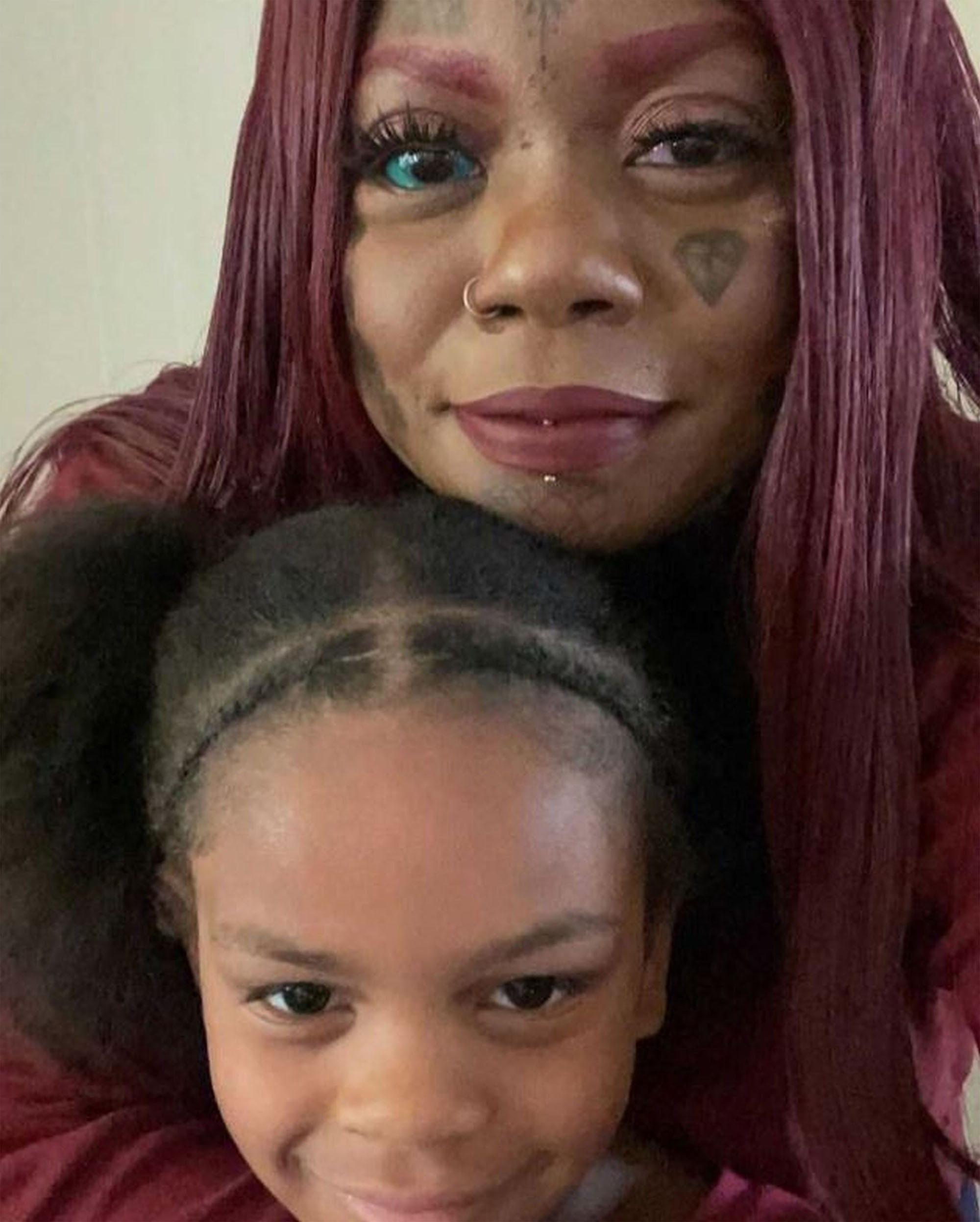 Peterson and daughter eye tattoo
Peterson and daughter eye tattoo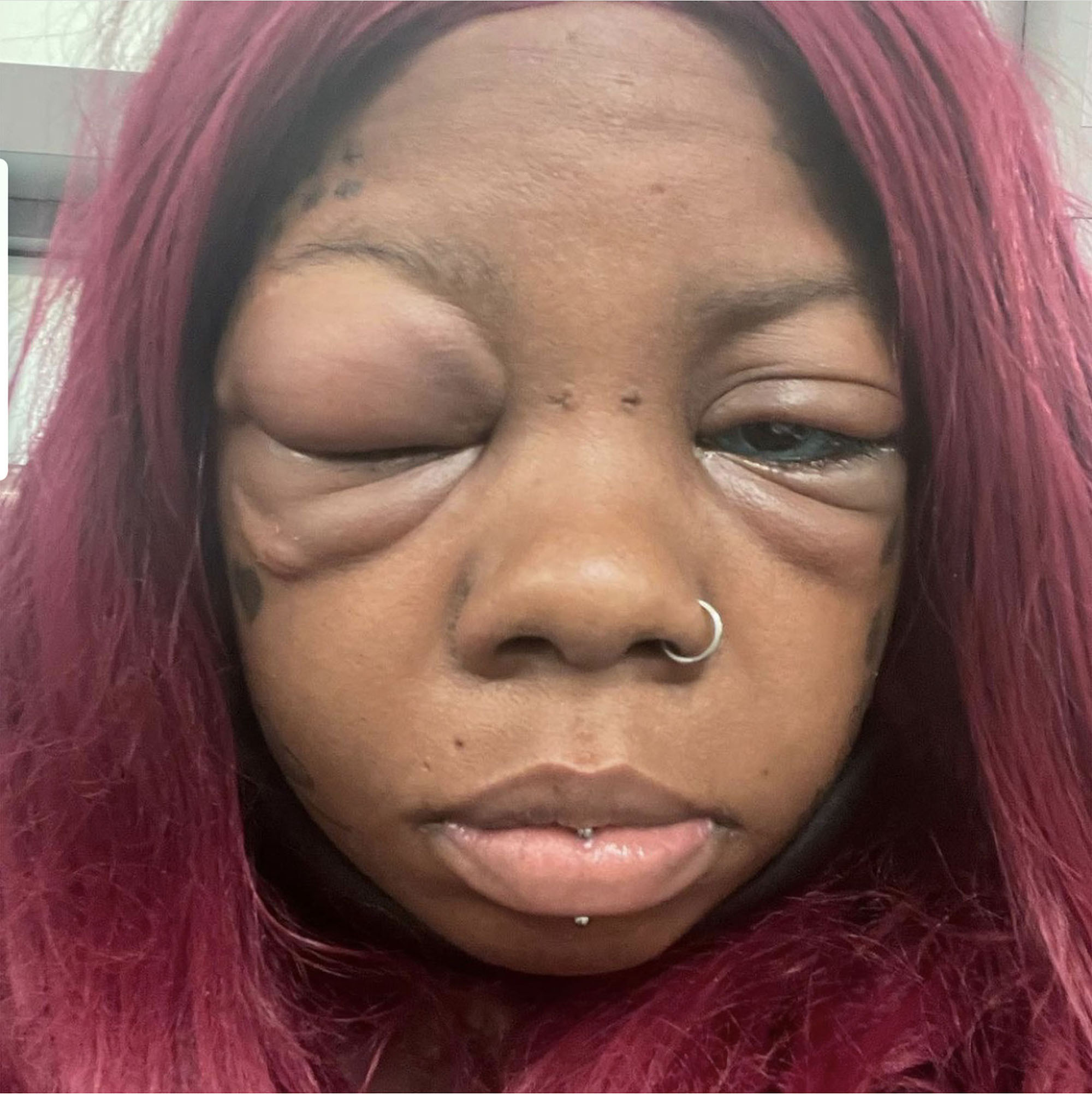 Swollen face of Peterson eye tattoo
Swollen face of Peterson eye tattoo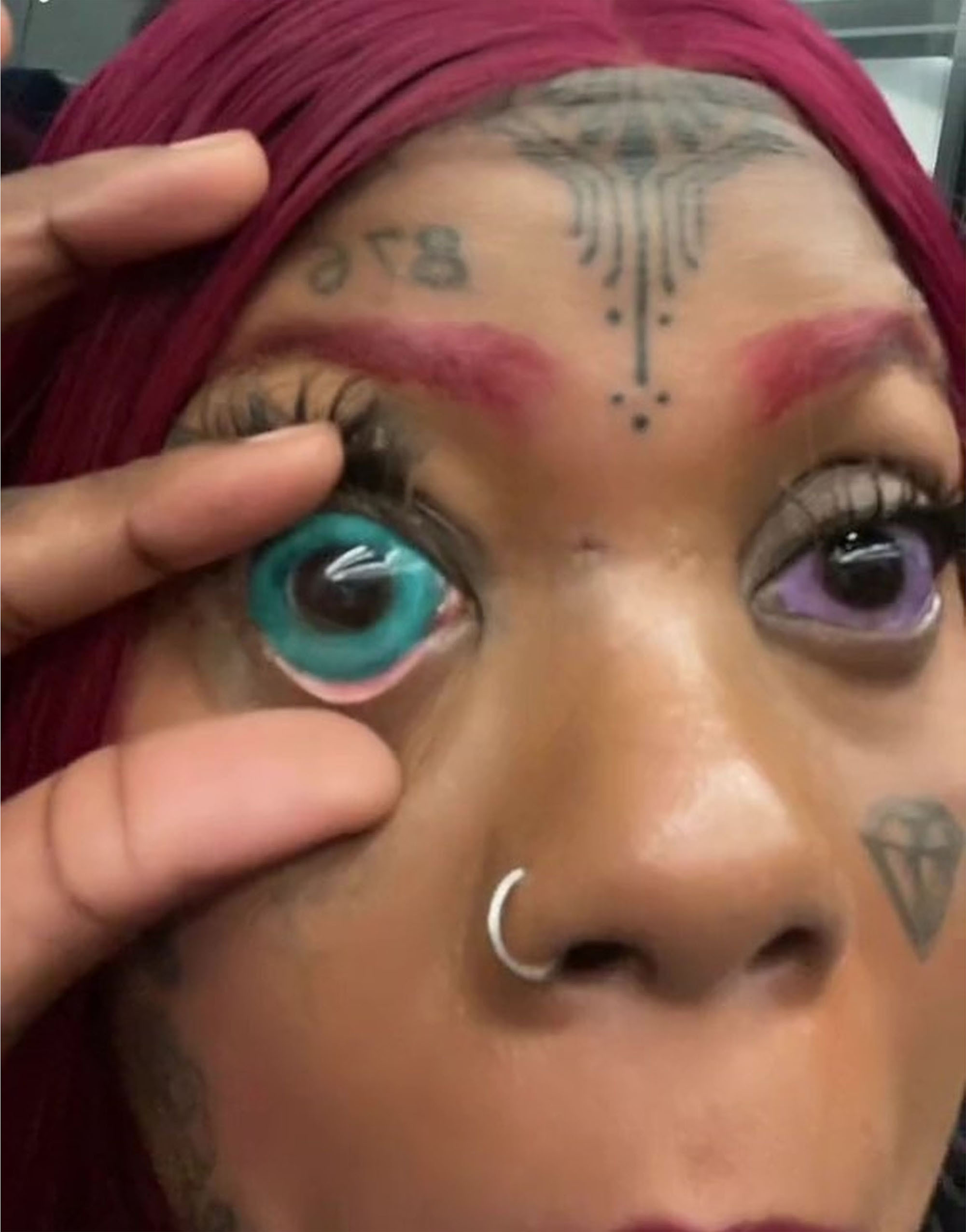 Blue eye tattoo
Blue eye tattoo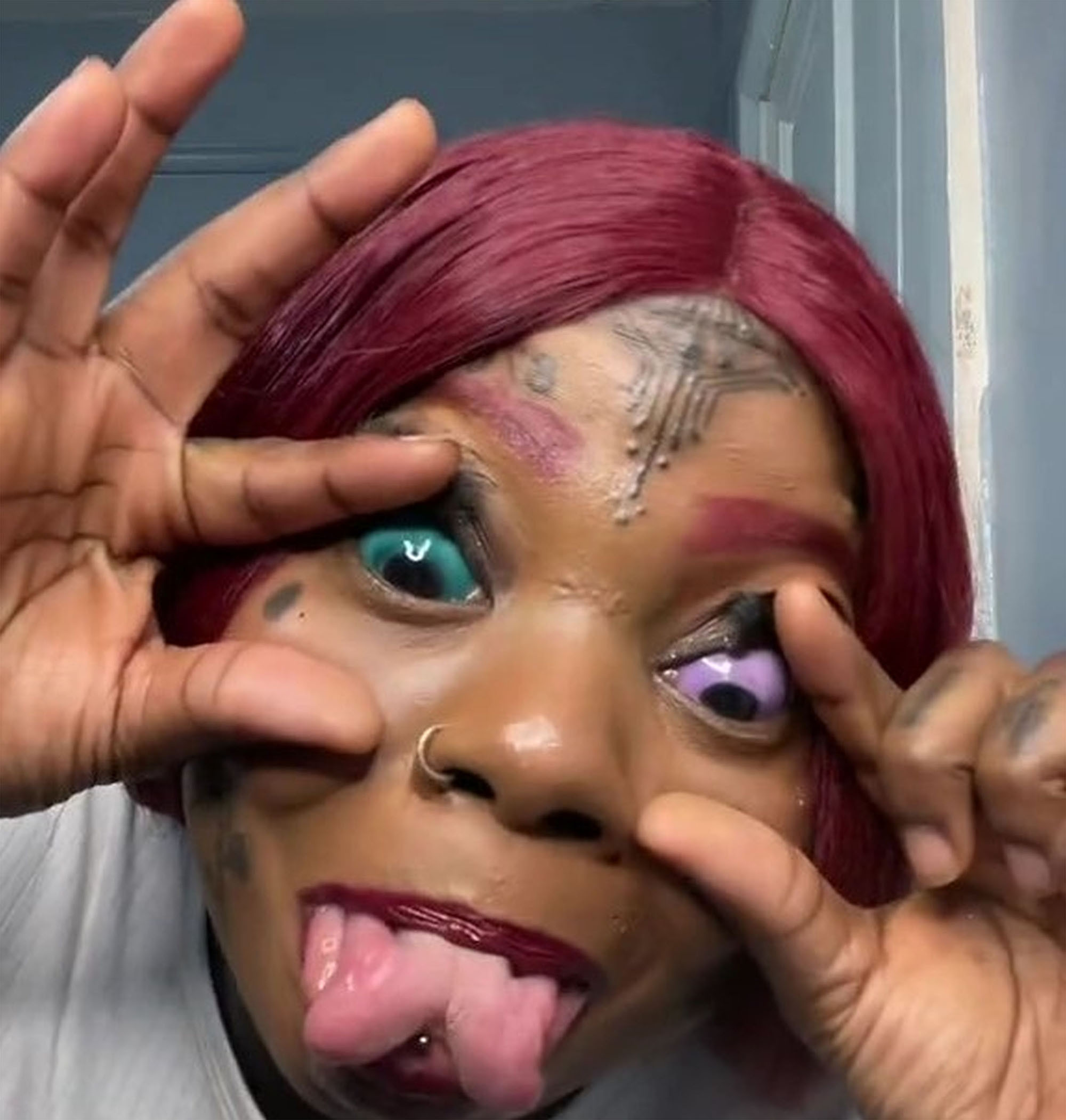 Peterson with colorful eyes eye tattoo
Peterson with colorful eyes eye tattoo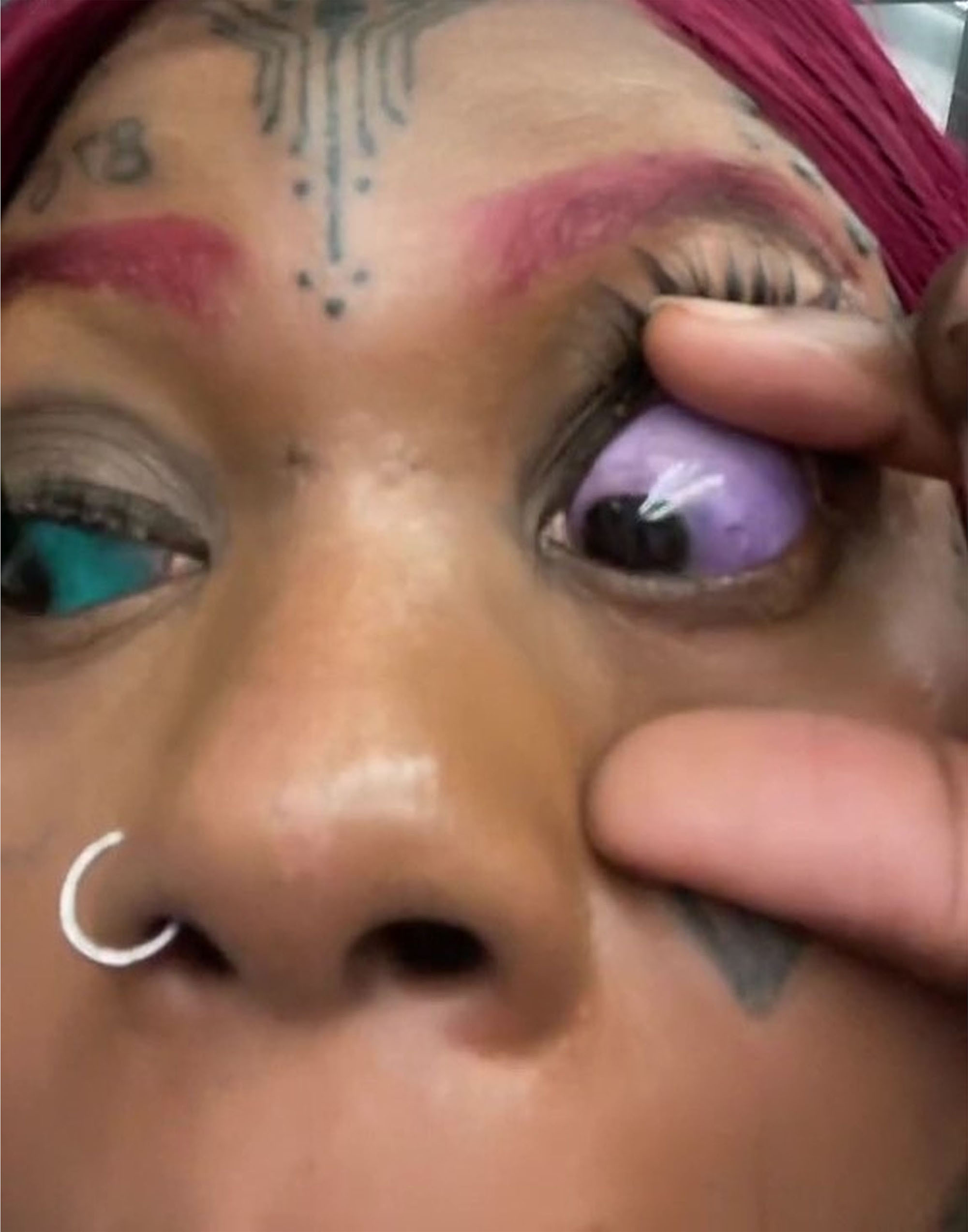 Purple eye tattoo
Purple eye tattoo
FAQ About Eye Tattoos
1. Are eye tattoos safe?
No, eye tattoos are not safe, as they carry significant risks including infection, inflammation, vision impairment, and blindness.
2. What is an eye tattoo?
An eye tattoo, also known as a scleral tattoo, involves injecting ink directly into the sclera (the white part of the eye) to change its color.
3. Can eye tattoos cause blindness?
Yes, eye tattoos can cause blindness due to ink migration, damage to critical eye structures, chronic inflammation, and infection.
4. Are there any legal regulations regarding eye tattoos?
Yes, some regions have banned eye tattoos due to their high risk, while others have specific guidelines regarding who can perform the procedure and the type of ink that can be used.
5. What should I consider before getting an eye tattoo?
Before getting an eye tattoo, consider the health risks, regulations, and safer alternatives, and ensure the professional is licensed and qualified.
6. What are the alternatives to eye tattoos for achieving a similar aesthetic?
Alternatives to eye tattoos include colored contact lenses, eye makeup, and other cosmetic enhancements.
7. How can I find a reputable tattoo artist for other types of tattoos?
You can find a reputable tattoo artist by researching their credentials, reviewing their portfolio, and ensuring they follow strict safety and hygiene practices; also, resources like tattooat.com can help you find qualified artists.
8. What are the best practices for tattoo aftercare?
Best practices for tattoo aftercare include keeping the tattoo clean and moisturized, avoiding direct sunlight, and following your tattoo artist’s specific instructions.
9. How does tattooat.com promote safe tattoo practices?
tattooat.com promotes safe tattoo practices by providing resources and information on finding reputable artists, understanding the risks of different procedures, and following proper aftercare guidelines.
10. What are some inspiring examples of body art that don’t involve eye tattoos?
Inspiring examples of body art that don’t involve eye tattoos include intricate sleeve tattoos, detailed back pieces, and creative uses of color and imagery on other parts of the body.